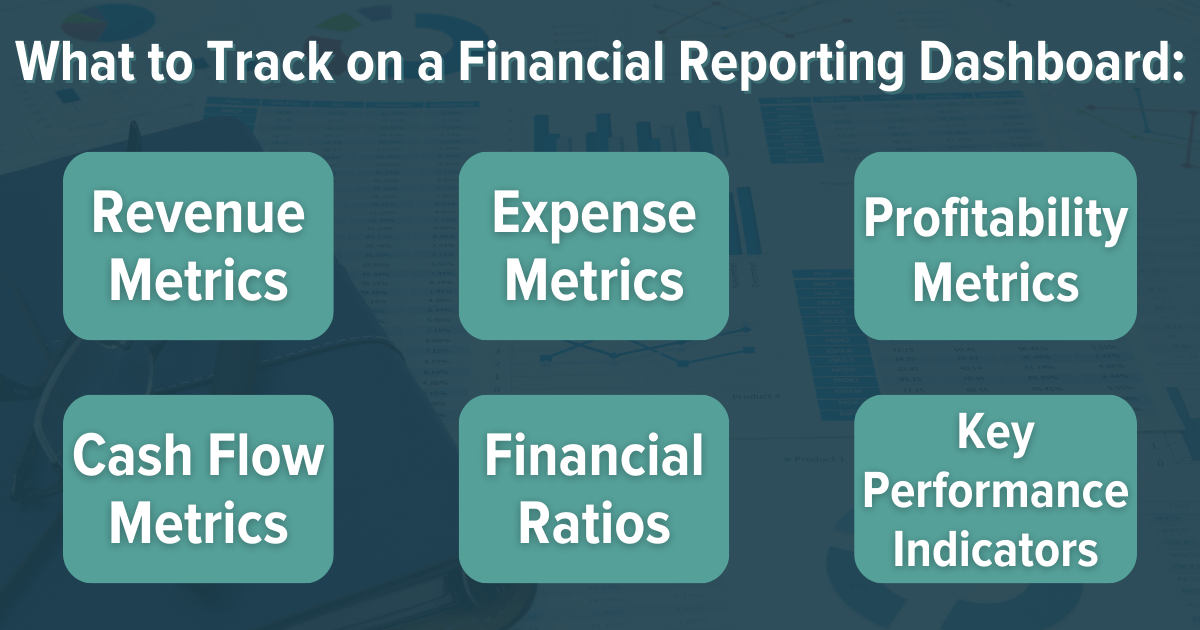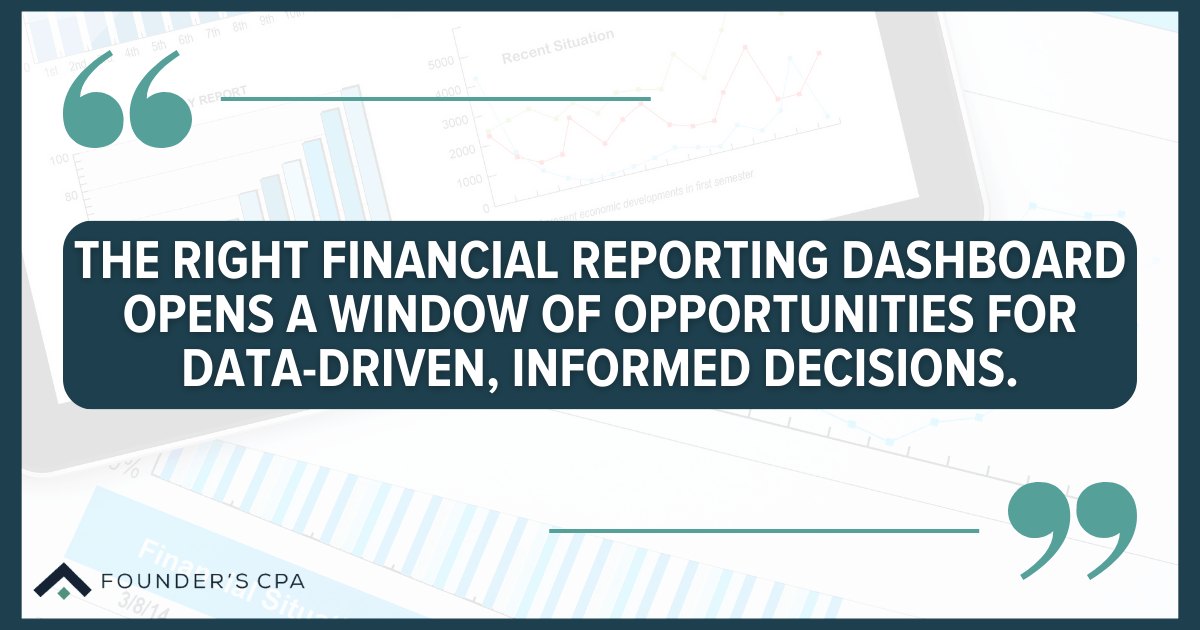What entity type is best for my startup?
A financial reporting dashboard is an invaluable management tool for making strategic and data-driven business decisions. It helps to stay on top of your business’s financial health and track positive and negative trends. Further, dashboards are a great way to measure your progress towards goals and objectives.
Many vital metrics and data come into play when evaluating a financial reporting dashboard. These include:
- Gross profit margin and revenue growth rate
- ROI
- Debt-to-equity ratio
- Working capital
What’s on your financial reporting dashboard?

Revenue Metrics on Your Financial Reporting Dashboard
Profitability might be the most essential measurement of a business’s financial position. But all success starts with revenue.
Revenue metrics help track your business’s ability to generate more sales and expand.
Modern technology allows for precise data on your:
- Target market
- Marketing trends
- Customer preferences
This way, you can follow new revenue, growth by channel, and sales by product or service.
You can also monitor revenue growth and acquisition metrics by customer demographic. These include age, profession, and other factors, granting a clear view of your target audience, which can lead to market approach improvements and new audiences.
Visualizing those numbers on a dashboard can help you and your team quickly evaluate your sales and marketing strategies. They can also highlight areas in which your marketing strategies need improvement.
Expense Metrics on Your Financial Reporting Dashboard
Tracking and monitoring business expenses helps you regulate costs and boost profitability.
An expense dashboard helps you visualize business expenditures by comparing expenses with the budget and tracking overspending. This visualization allows us to make fast decisions to address out-of-control spending.
Because accounting entries serve as the basis for a dashboard, a simple click reveals cost trends and spending patterns. They can also help owners identify opportunities for expense reduction and cost optimization.
Profitability Metrics on Your Financial Reporting Dashboard
A profitability dashboard tracks the operating gross margin and net profit margin. These metrics show how a business generates profit.
Gross profit provides an overview of business performance, focusing on sales and production efficiency. After accounting for all direct costs related to the good or service production, the margin is a percentage of total revenues left over.
Net profit is an essential performance metric that measures the percentage of total revenue left after all expenses. Monitoring profitability trends can inform decision-making and help identify areas for improvement.
Cash Flow Metrics On Your Financial Reporting Dashboard
Cash flow metrics show cash inflows and outflows related to business activities. They provide invaluable insights for measuring the business’ ability to generate cash from its primary operations.
Regular cash flow tracking helps evaluate the business’s liquidity and ensures that the company remains sustainable.
Cash flow tracking involves analyzing business activities, including:
- Operating
- Financing
- Investing
Moreover, tracking cash flows enables a business to adjust its budget to speed up or slow spending.
A quick breakdown of cash flow dynamics helps identify potential cash flow gaps or issues. Hence, the business can respond with corrective measures and engage in strategic planning to overcome future shortfalls.
Financial Ratios
Financial ratios show a business’s ability to meet financial obligations. For example, the current ratio is a financial ratio that measures a company’s ability to pay its short-term debts by using its current assets, such as cash, accounts receivable, and inventory. The quick ratio is a financial ratio that measures a company’s ability to meet short-term financial obligations by using only its most liquid assets (like cash).
Monitoring a business’s liquidity ratio is instrumental in determining its capacity to meet its short-term liabilities. A positive liquidity ratio means a company has financial stability, credibility, and trust. They are often in a flexible position and able to invest in opportunities.
Financial ratios provide a comprehensive analysis of a business’s financial health and performance, making them a crucial tool for any business looking to assess its financial standing and make informed decisions.
Key Performance Indicators (KPIs)
The financial KPI dashboard offers a comprehensive overview of the business’s economic performance. It allows investors and stakeholders to track key financial indicators to monitor the business’s financial health. Also, identify any potential risks and make strategic decisions.
KPIs allow you to quickly track and monitor:
- Sales
- Customer satisfaction
- Operational efficiency
They provide an in-depth look at consumer demographics, market trends, and profitability. Hence, the business can weigh whether it is working towards achieving its overall goals and objectives.
Business owners can analyze their KPIs while comparing them with historical data and predict future trends. These KPIs yield better insights and allow for real-time readjustment of strategies to ensure you meet your long-term goals.

Need Help Crafting a Financial Reporting Dashboard?
A financial reporting dashboard offers invaluable insights for your business, from tracking customer satisfaction to sales and operational efficiency. When you know what’s going well (and what’s not working), deciding where to put your energy is easier.
The right financial reporting dashboard opens a window of opportunities for data-driven, informed decisions. Data visualization and reporting tools will help you effectively present financial information to your key stakeholders.
Putting together a financial reporting dashboard is more manageable with help. Contact the startup finance experts Founder’s today and get expert help to elevate your business.
Sep 26, 2023 10:22:00 AM



.jpg?width=500&height=500&name=Untitled%20design%20(1).jpg)